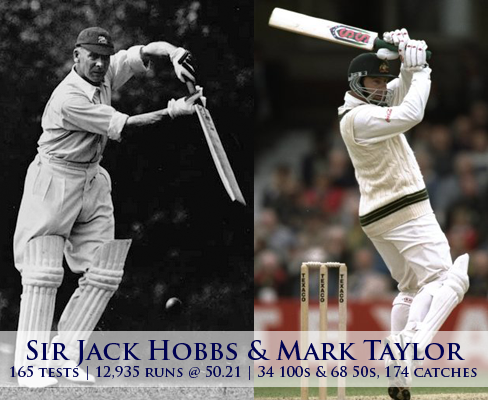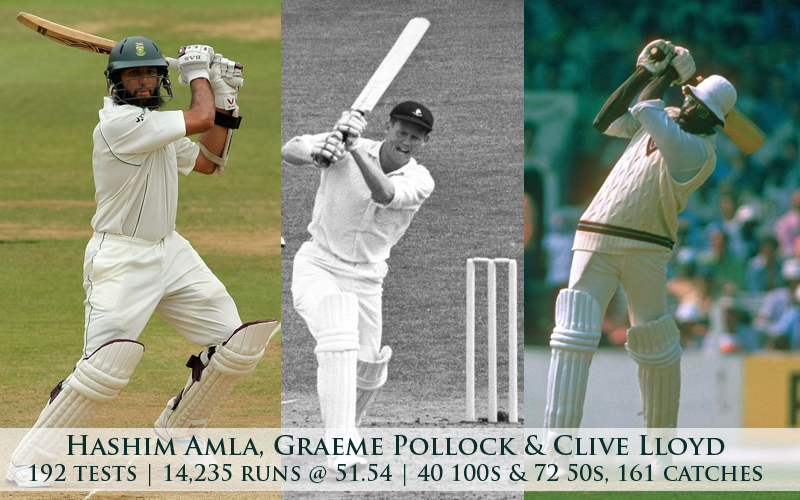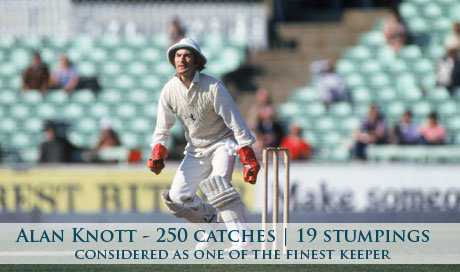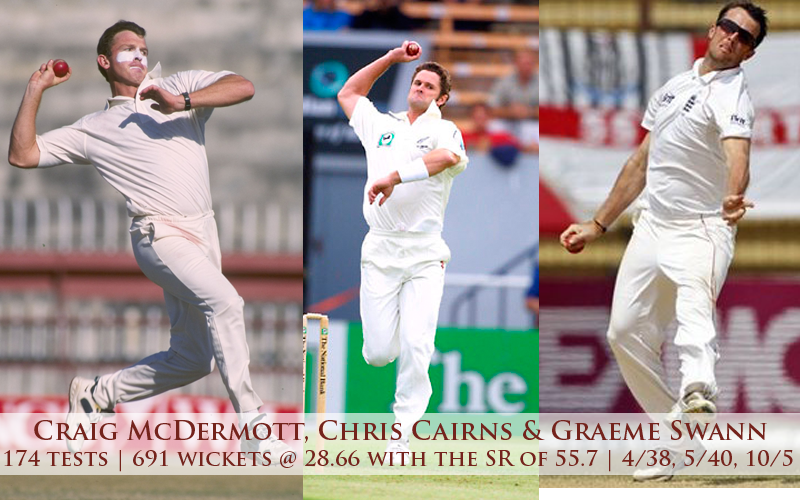When cricket was played by gentlemen XI
Playing XI
Bill Ponsford – RHB, 29 matches, 2122 runs @48.22 with 7 100’s (13819 FC Runs @65.18 with 47 100’s)
The only player in first class cricket to have exceed 400 twice, Ponsford was a run scoring machine, notching up four triple centuries alongside his two quadruples. The discrepancy in his average, 17 runs, is explained by a combination of illness, injury and Bodyline. On top form in 1934, his dismantled England’s bowling attack, topping the batting averages with 569 runs at an average of 95. Not only was he a superb batsmen he was a brilliant outfielder despite being red-green colour blind.
Bill Woodfull – RHB, 35 matches, 2300 runs @46.00 with 7 100’s (13388 FC Runs @64.99 with 49 100’s )
Ponsford’s partner in crime, Bill Woodfull, was a quality batsman in his own right. Despite being a defensive player by nature, he hit powerful shots all over the wicket. However he was at his best with Ponsford, with 23 three-figure partnerships in cricket, including one of 375. As a captain he was known as a gentleman, with the deepest respect for all players of the game, refusing to retaliate to Bodyline and happily moving round the batting order to accommodate other players.
Saeed Anwar – LHB, 55 matches, 4052 runs @45.52 with 11 100’s and 25 50’s.
Although an opener by trade, Anward fits into this team as an aggressive, stroke playing number three. A keen driver of the ball through the offside, he flourished whenever a bowler offered him any width. His game was completed with nimble footwork against spin, and a languish flick of a ball pitching outside off stump to the midwicket boundary.
Patsy Hendren – RHB, 51 matches, 3625 runs @47.63 with 7 100’s and 21 50’s (57611 FC runs @50.80 with 170 100’s)
Not content with being one of the best batsmen of his time, Patsy Hendren was an exceedingly popular cricketer famed for his flashing square cut, lofted on-drive and devilish hooking. At 170 first-class centuries he sits in second place behind Jack Hobbs. Despite arriving relatively late to the Test scene, he showed his prowess there too notching up seven centuries at an impressive average. His ability as a deep fieldsman is illustrated to some extent by the number of catches he brought off, 725, but the number of runs he saved cannot be gauged. His wit and charm made him a popular fellow on tour, but it is run scoring that most defines him, scoring 3,000 runs in three different seasons, as well as a further 12 seasons in excess of 2,000 runs.
Zaheer Abbas – RHB, 78 matches, 5062 runs @44.79 with 12 100’s (34,843 FC runs @51.54 with 108 100’s)
Abbas provides a further touch of class to the batting line-up. With a high back-lift he elegantly guided the ball to all areas of the pitch, more often than not the boundary. Dubbed the Asian Bradman, four of his twelve test centuries were doubles, including his maiden century against England. Zaheer was at his best against the Indian spin quartet of the late 70’s knocking up scores of 176, 96 and 235 in one memorable set of successive innings. His tally of 583 runs in a short rubber was then a world record. His 108 first class hundreds, the only Asian batsmen to achieve this milestone, show his class.
Les Ames – RHB, 47 matches, 2434 runs @40.56 with 8 100’s, 74 catches, 23 stumpings (37,248 FC runs @43.51 with 102 100’s, 703 catches, 418 stumpings)
Not many keepers could bat at six in an eleven like this, but as one of the greatest wicket-keeper batsmen of all time, if anyone can, it’s Les Ames. A fluent classical batsman with a magnificent drive, quick feet and a strong pull Ames was a quick run scorer, scoring at nearly 50 runs an hour throughout his career. His 102 first class centuries represent just what a strong batsmen he was. However, equally as strong a component to his game was his keeping. He saw the ball so early that he was invariably in the right position without having to throw himself about. His glovework was neat and economical, his stumpings almost apologetic. His 418 stumpings are the most by any player, and will prove very useful in complementing the strong spin attack. Like many members of the team, Ames was a quiet man, any flattery would see him unmoved: he could never understand what all the fuss was about. Perhaps the best all-round keeper ever, Ames provides that extra touch of greatness to the side.
Hedley Verity, RHB/SLA, 40 matches, 669 runs @20.90, 144 wickets @24.37 (1,965 wickets @14.90)
The war deprived him of perhaps the prime of his career, but more importantly his life. Verity was never a great spinner of the ball, instead relying on impeccable accuracy and variety for his wickets, which were never in short supply. Verity took Bradman’s wicket more times in tests than any other bowler, and the great man considered him one of the best spinners the world has produced saying “Undoubtedly he was one of the greatest slow left-handed spinners of all time”. His first class average was by far the best of his time, but could perhaps have been better. He often let up when his team was in a winning position, much preferring to bowl on the frequent batsmen friendly surfaces of the time, working for his wickets. That didn’t prevent him from taking 10 wickets in an innings for just 10 runs in 1931, before repeating the ten-wicket haul in 1932. He succeeded at test level too, at the time he reached 100 wickets he was the fastest England bowler to do so and his 15 for 104 at Lord’s ranks among the top bowling performances of all time. Verity was no mug with the bat either, often being mistaken for an out of form Sutcliffe, by no means a bad comparison.
Merv Hughes, RHB/RF, 53 matches, 1033 runs @16.64, 212 wickets @28.38
Merv Hughes. A crowd favourite, he was a lively character armed with an imposing run-up and delivery action, a classic fast bowlers' glare down the pitch, a mischievous sense of humour and a moustache of such incredible proportions it was insured for £200,000. Equally as effective as a stock bowler and a spearhead, Hughes is the third seamer in this impressive line-up, but his quality is not to be sniffed at, especially once he added accuracy and variation to his raw pace by the middle of his career.
Fred Trueman, RHB/RF, 67 matches, 981 runs @13.81, 307 wickets @21.57 (2304 FC wickets @18.29)
T'greatest bloody fast bowler that ever drew breath. The first man to take 300 test wickets was truly one of the world’s great bowlers. Raw pace was combined with consistent outswing and great stamina. He could move the ball both ways and possessed a potent yorker. His fiery charisma often got him into trouble off the pitch, but on it he was a wicket taking machine, helping to reduce India to 0-4 and then taking 8-31 in his first series. His impressive average was combined with a staggering strike right. Batsmen didn’t last long at the wicket when Fred was around. A fine fielder, especially in close but also in the deep with the ability to throw from both hands. As a new ball bowler he brings a lot to the team and would be a handful for any batsman.
Curtly Ambrose LHB/RF, 98 matches, 1439 runs @12.40, 405 wickets @20.99
“Curtly talk to no man”. And he didn’t need to, he let his bowling do the talking. Releasing the ball from higher than ten feet he was always going to get lots of bounce, but this was combined with accuracy and subtle seam movement. 2 in every 7 overs that he bowled was a maiden, tying the batsmen down before taking their wicket. Two spells in his career stand out: 6 for 24 that hustled England out for 46 in Trinidad in 1993-94, and his series-clinching burst of 7 for 1 in 32 deliveries against Australia at the WACA the previous season. A fiery competitor on the field, but a gentle giant off the field, Ambrose will form an impressive new ball partnership with Fred Trueman.
Tich Freeman RHB/LB, 12 matches, 154 runs @14.00, 66 wickets @25.86 (3776 FC wickets @18.42)
If ever there were a bowler who’s test career didn’t do him justice, it was Tich Freeman. 66 wickets at 26 apiece is hardly a bad return, but he deserved far more. Only Rhodes has taken more first class wickets, but his extra 421 wickets took him 515 games more. Freeman’s 3776 wickets came in just 592 games. Between 1928 and 1934 he took over 200 wickets a season, including 304 in what was otherwise a batsmen’s season of 1928. No other bowler has taken 10 wickets in an innings three times. No other bowler has taken 17 wickets in a match twice. His legbreaks, googlies and top-spinners were combined with careful variation of flight and speed. He was aided in his phenomenal wicket-taking by Les Ames behind the stumps, taking dismissal after dismissal. While not always at his best at the great batsmen, wickets were never hard to come by when Tich Freeman was around,
Strengths
Runs and wickets – The team has a massive amount of runs and wickets behind them. They’re clearly not lacking any experience, probably having played more games than any other team in the draft.
Woodfull and Ponsford batted fantastically together and provide a solid start at the top of the order. Tailenders often went off to work when these two were batting, knowing they wouldn’t get out quickly.
Attractive stroke play in the middle order – There's three or four quick scoring batsmen in the middle order, able to take the game away after Woodfull and Ponsford have opened things up.
Quality bowling. Two all-time great seam bowlers. Arguably the best left-arm spinner of all time. A man who took wickets for breakfast. And then Merv Hughes and his fabulous facial hair.
Weaknesses
Tail – Verity really isn’t a test number 7. Certainly not in an all time line up. Once you’re through the top order, the tail isn’t going to last long at all.
Lacking an ATG batsman – While lots of the batsmen were fantastic domestically, and very good at test level, there’s a lack of a really great player at test level.
Lack of seamer variety – No left armer is perhaps a probem.





